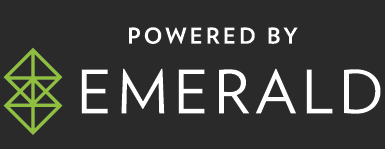By Amol Waishampayan, Co-Founder, fullthrottle.ai®
For more than a decade, marketers have traded control for convenience — accepting the opacity of the walled gardens in exchange for scale. That bargain is expiring. I’ve sat in too many conversations with marketers and business owners who say some version of, “It works, but I can’t see what’s actually happening.” That’s the trade off a lot of us have made for more than a decade. The mega-platforms are easy and scalable, but they’re also opaque, limiting, and increasingly expensive. When audience creation, delivery, and attribution all live inside a few closed systems, you give up leverage, transparency, and the ability to learn across your full marketing mix. The result is reactive: opt into the rules, accept the reporting, and hope the algorithm keeps paying dividends.
It doesn’t have to stay that way. The open web has matured. Identity and measurement have moved beyond third-party cookies. And AI is finally useful with the unglamorous work — turning messy data and fragmented channels into plans a lean team can actually execute. The next step isn’t to abandon the platforms; it’s to rebalance — bringing more capabilities closer to the team to reduce dependency while keeping the speed and simplicity everyone values.
The problem now
The big platforms are “easy” because they remove complexities. Audience building, inventory, bidding, and attribution are packaged behind a friendly UI. But that simple UI creates familiar problems.
Limited control and transparency. Auction dynamics, targeting expansion, and delivery choices sit behind a wall. You can set goals and toggles, but you can’t truly govern cross-channel frequency, duplication, or where creative appears beyond a platform’s borders. You end up optimizing based on the platform’s KPIs as much as your own. Basically, you rent reach, but never own insight.
Spend ceilings and volatility. As CPMs rise and algorithms chase broader outcomes, smaller and mid-market budgets struggle to consistently win quality impressions. And policy tweaks or auction shifts can swing performance more than any external adjustment, leaving advertisers exposed to platform whims. Your budgets become hostage to auction shifts.
Shallow learning. Insights rarely travel. What you learn in one garden stays there, so every channel outside it can feel like starting over. That fragments strategy and slows improvement. What happens in-platform stays in-platform.
Costs climb while clarity diminishes. But marketers, especially the smaller ones, have had few options.
Why things are changing
As much as the status quo has governed things since the mega platforms launched, marketplace dynamics are quickly shifting and marketers need to keep up.
First-party identity at the household level. You no longer need industrial-grade stacks or mountains of third-party data to run addressable programs. Privacy-safe identity layers can resolve signals and connect exposure to business outcomes without cookies. Household-level identity lets you manage reach, suppression, and frequency across the entire open internet — and CTV — but on the marketer’s terms, not just inside a single platform.
AI for planning and activation. Planning used to be a spreadsheet sport. Today, models can ingest performance history, inventory availability, and seasonal signals to propose channel mixes, pacing, and budgets in minutes, then adapt continuously as results come in. For lean teams, AI acts like a force multiplier: You keep simplicity without surrendering control.
Outcome-based measurement that you can see. When exposure ties to transactions — ideally even at the SKU or service-category level — you get real data that matters and isn’t trapped in one dashboard. That data can let you compare channels to gauge business impact, not just clicks or view-throughs, and reallocate spend with confidence.
Quite simply, it’s finally realistic to run a multi-channel campaign without staffing an entire new team or buying eight separate tools — making in-housing a real option.
So what now?
The point isn’t to replace the platforms; it’s to widen the focus. For the business owners I meet with, that simply means seeking more control over where money goes, more visibility into what it does, and more learning they can reuse — without giving up the convenience that makes the mega platforms so attractive in the first place. Those platforms remain part of the plan; they’re just no longer the only plan. And with better choices on the table, “more choice, less dependency” stops being the ask and instead becomes the next sensible step.




